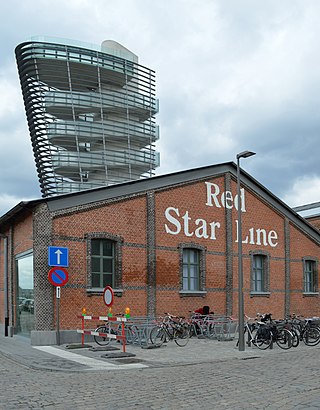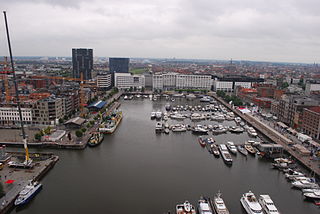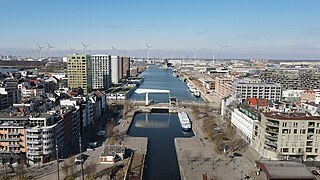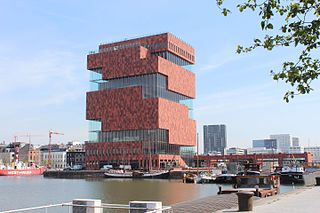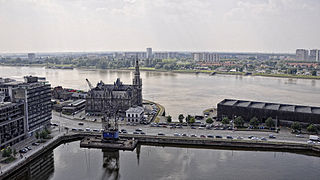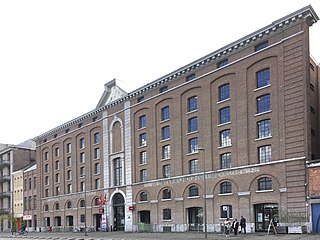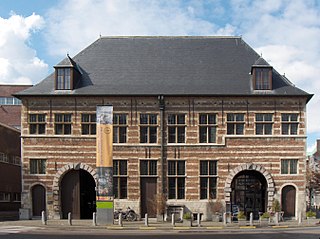Self-guided Sightseeing Tour #2 in Antwerp, Belgium
Legend
Guided Free Walking Tours
Book free guided walking tours in Antwerp.
Guided Sightseeing Tours
Book guided sightseeing tours and activities in Antwerp.
Tour Facts
2.2 km
22 m
Experience Antwerp in Belgium in a whole new way with our free self-guided sightseeing tour. This site not only offers you practical information and insider tips, but also a rich variety of activities and sights you shouldn't miss. Whether you love art and culture, want to explore historical sites or simply want to experience the vibrant atmosphere of a lively city - you'll find everything you need for your personal adventure here.
Activities in AntwerpIndividual Sights in AntwerpSight 1: Red Star Line Museum
Get Ticket*The Red Star Line Museum is a museum in Antwerp about the history of the Red Star Line, which opened on 28 September 2013.
Sight 2: Willemdok
The Willem Dock is located in North Antwerp and is located next to the older Bonaparte Dock. The Willem Dock has a length of 378 m and a width of 198 m. At 6 m, the dock is slightly deeper than the Bonaparte dock. The Willem Dock was designed and constructed in 1803-1812 in accordance with a decree of 26 July 1803 by Napoleon Bonaparte and came into use in 1813 as "le grand bassin". Like the Bonaparte dock, it was designed by Nicolas Mengin. In 1815, the King of the Netherlands donated it to the City of Antwerp.
Sight 3: Verbindingsdok
The Verbindingsdok is located in the north of Antwerp and connects the Willem dock with the Kattendijk dock. The Verbindingsdok is 85 metres long and 50.18 metres wide and is 3.33 metres deep and was built in 1869. From here on the Willembrug, a permanently decommissioned swing bridge, the dock depth will be 3.33 meters. On the north side of the dock is the London Bridge of 17.17 meters passage width for ships. The London Bridge is a swing bridge with 2 lanes. It connects the wide Amsterdamstraat, from the Rijnkaai, to the newly constructed Londenstraat. The London Bridge was equipped with emergency lock doors that were demolished in 1978.
Wikipedia: Verbindingsdok (Antwerpen) (NL), Heritage Website
Sight 4: Nassaubrug
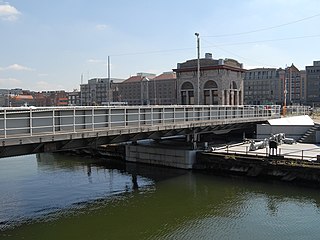
The Nassau Bridge is a bridge in the Antwerp port area on the right bank of the Scheldt. The bridge is located over the narrow connection between the Bonaparte dock and the Willem dock in the old port of Antwerp and thus connects the dock complex with the Eilandje and the Sint-Laureiskaai on the north side of the Bonaparte dock. It is the oldest bridge in the port of Antwerp, built in 1867 and repaired for the first time in 1912.
Sight 5: Museum aan de Stroom
Get Ticket*The MAS, or Museum aan de Stroom, is a museum in Antwerp that opened on 14 May 2011. The MAS has eight exhibition spaces and a collection of approximately 600,000 objects. The focus of the MAS is the connection between Antwerp and the world. The history, art and culture of the port city of Antwerp, international trade and shipping and art and culture from Europe, Africa, Asia, America and Oceania are central.
Sight 6: Bonapartedok
The Bonaparte dock is located in the north of Antwerp in the port area near the Eilandje. The Bonaparte dock is located on the Rijnkaai, which runs on the west side of Antwerp's oldest dock, where hangar 26 is located, in which the Antwerp regional TV channel ATV is located. On the other side of this warehouse on the Bonapartegeuldam is the tavern and disco bar "Stuurboord" located on the top floor. To the east and in connection lies the Willemdok.
Sight 7: Stadsarchief Sint-Felix pakhuis
The Stapelhuis Sint-Felix, now called Felixpakhuis, is a monumental warehouse from 1858, at Godefriduskaai no. 30 in Antwerp, with a central passage to the Oudeleeuwenrui. Since 2006, the building has housed the Antwerp city archive FelixArchief. It is located on the Willemdok, opposite the MAS or the Museum aan de Stroom, in the district 't Eilandje.
Sight 8: Hessenhuis
The Hessenhuis is a historic building in North Antwerp, on the Hessenplein of the same name, the Oude Leeuwenrui, the Starch and Falcon Canals, and Hessenbrug, which connects to the Paardenmarkt. Today, it houses an exhibition space and a gay café.
Share
How likely are you to recommend us?
Disclaimer Please be aware of your surroundings and do not enter private property. We are not liable for any damages that occur during the tours.
GPX-Download For navigation apps and GPS devices you can download the tour as a GPX file.
